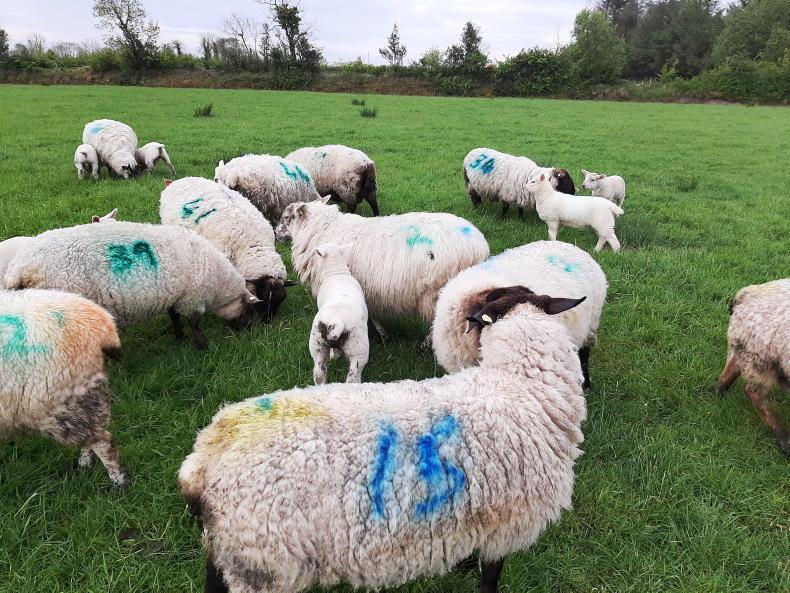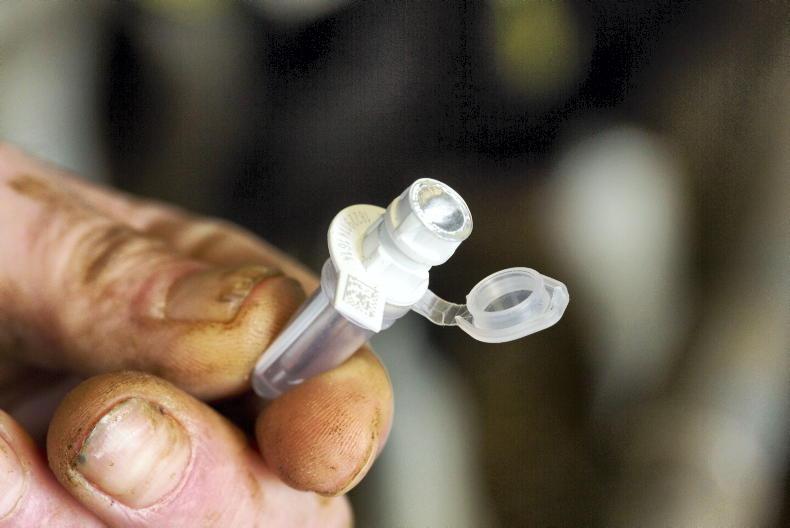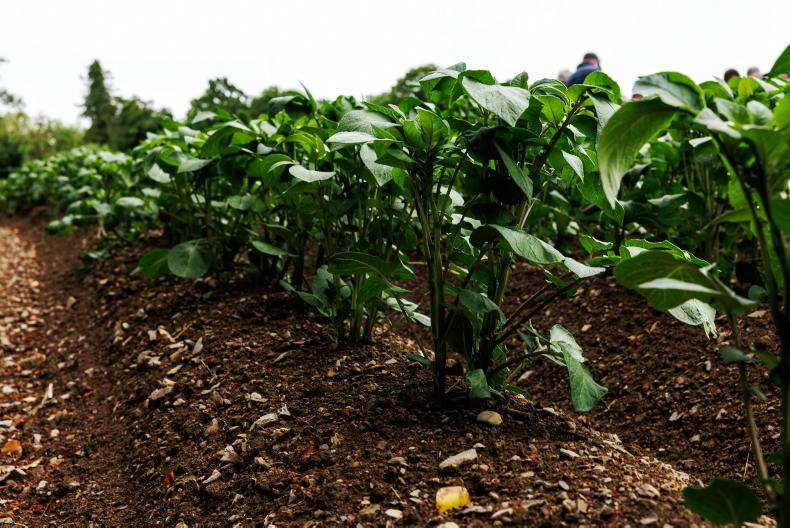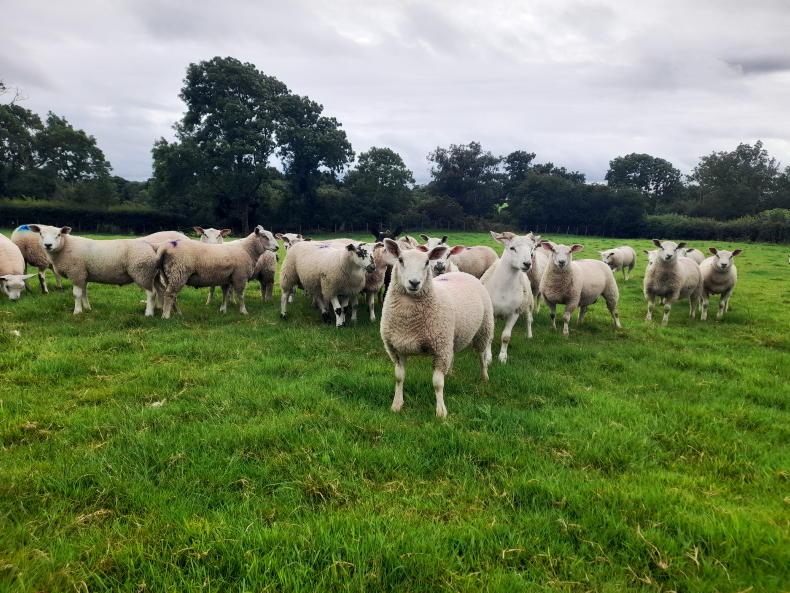The Department of Agriculture has released its nematodirus forecast for 2023.
The report warns that nematodirus egg hatching is expected to peak in 2023 from the end of March to the early days of April in the south and Atlantic coastal fringes.
This contrasts to the east, midlands and inland areas of the northwest, where peak egg hatching will be slightly later and typically occurring from 6 to 12 April. The map below gives a more accurate timeframe for peak hatching across regions.

Figure 1: Estimated dates in March and April 2023 when peak Nematodirus egg hatching is expected to occur on pasture. \ (Source: Met Éireann).
Timing of treatment
Lambs aged six to 12 weeks of age and grazing on contaminated pastures are those which face the greatest risk. The advice detailed in the forecast is to treat such lambs approximately two weeks after the peak nematodirus egg hatching.
However, this advice should be superseded on individual farms where clinical signs consistent with nematodirus are observed.
The lifecycle of nematodirus is different to other roundworms in that eggs deposited on pasture do not hatch until the following year, releasing infective larvae.
This mass hatching event occurs in spring when soil temperatures increase after a period of cold weather. Disease is most prevalent in April but can last through until May and June and often later depending on weather patterns.
The disease can cause rapid damage, with nematodirus larvae invading the wall of the intestine following ingestion. It is characterised by profuse diarrhoea, dehydration and weight loss.
Where an outbreak occurs, the forecast highlights that lambs can be seen congregating around water troughs due to a severe thirst that develops.
Treatment options
Benzimidazoles or white drenches are the drug of choice as products containing this active ingredient are effective against both larval and adult stages.
The use of white drenches is viewed as essential in reducing the rate of anthelmintic resistance occurring.
“The use of this anthelmintic class as the first-choice treatment option will also help to reduce the exposure of other worms such as Trichostrongylus and Teladorsagia to other anthelmintic classes (eg macrocyclic lactones) at a point in the grazing season when treatment for these may not be necessary. This will help to sustain the effectiveness of these drugs and is particularly important on farms with pre-existing issues of benzimidazole resistance in populations of the common stomach/intestinal roundworms.”
It is important to note that lambs can be at risk of re-infection. Challenges often occur where there is a significant age difference between lambs.
For example, if lambs aged four to eight weeks of age are grazing together, lambs aged six to eight weeks may be experiencing a nematodirus burden while younger lambs may not.
Preventing disease
The disease can theoretically be prevented or the risk reduced by keeping lambs off any pasture that was grazed by young lambs or calves in the previous years.
This is only an option on a minority of farms, with flocks run at a high stocking rate facing a particularly high risk.
Lambs suckling ewes with a poor milk yield or lambs being reared as triplets or suckling as twins on yearling hoggets may also be at greater risk given they are likely to be consuming higher volumes of grass at a younger age in their life.
The forecast advises that where at all possible these animals should be given access to clean pasture.
The Department of Agriculture has released its nematodirus forecast for 2023.
The report warns that nematodirus egg hatching is expected to peak in 2023 from the end of March to the early days of April in the south and Atlantic coastal fringes.
This contrasts to the east, midlands and inland areas of the northwest, where peak egg hatching will be slightly later and typically occurring from 6 to 12 April. The map below gives a more accurate timeframe for peak hatching across regions.

Figure 1: Estimated dates in March and April 2023 when peak Nematodirus egg hatching is expected to occur on pasture. \ (Source: Met Éireann).
Timing of treatment
Lambs aged six to 12 weeks of age and grazing on contaminated pastures are those which face the greatest risk. The advice detailed in the forecast is to treat such lambs approximately two weeks after the peak nematodirus egg hatching.
However, this advice should be superseded on individual farms where clinical signs consistent with nematodirus are observed.
The lifecycle of nematodirus is different to other roundworms in that eggs deposited on pasture do not hatch until the following year, releasing infective larvae.
This mass hatching event occurs in spring when soil temperatures increase after a period of cold weather. Disease is most prevalent in April but can last through until May and June and often later depending on weather patterns.
The disease can cause rapid damage, with nematodirus larvae invading the wall of the intestine following ingestion. It is characterised by profuse diarrhoea, dehydration and weight loss.
Where an outbreak occurs, the forecast highlights that lambs can be seen congregating around water troughs due to a severe thirst that develops.
Treatment options
Benzimidazoles or white drenches are the drug of choice as products containing this active ingredient are effective against both larval and adult stages.
The use of white drenches is viewed as essential in reducing the rate of anthelmintic resistance occurring.
“The use of this anthelmintic class as the first-choice treatment option will also help to reduce the exposure of other worms such as Trichostrongylus and Teladorsagia to other anthelmintic classes (eg macrocyclic lactones) at a point in the grazing season when treatment for these may not be necessary. This will help to sustain the effectiveness of these drugs and is particularly important on farms with pre-existing issues of benzimidazole resistance in populations of the common stomach/intestinal roundworms.”
It is important to note that lambs can be at risk of re-infection. Challenges often occur where there is a significant age difference between lambs.
For example, if lambs aged four to eight weeks of age are grazing together, lambs aged six to eight weeks may be experiencing a nematodirus burden while younger lambs may not.
Preventing disease
The disease can theoretically be prevented or the risk reduced by keeping lambs off any pasture that was grazed by young lambs or calves in the previous years.
This is only an option on a minority of farms, with flocks run at a high stocking rate facing a particularly high risk.
Lambs suckling ewes with a poor milk yield or lambs being reared as triplets or suckling as twins on yearling hoggets may also be at greater risk given they are likely to be consuming higher volumes of grass at a younger age in their life.
The forecast advises that where at all possible these animals should be given access to clean pasture.










SHARING OPTIONS